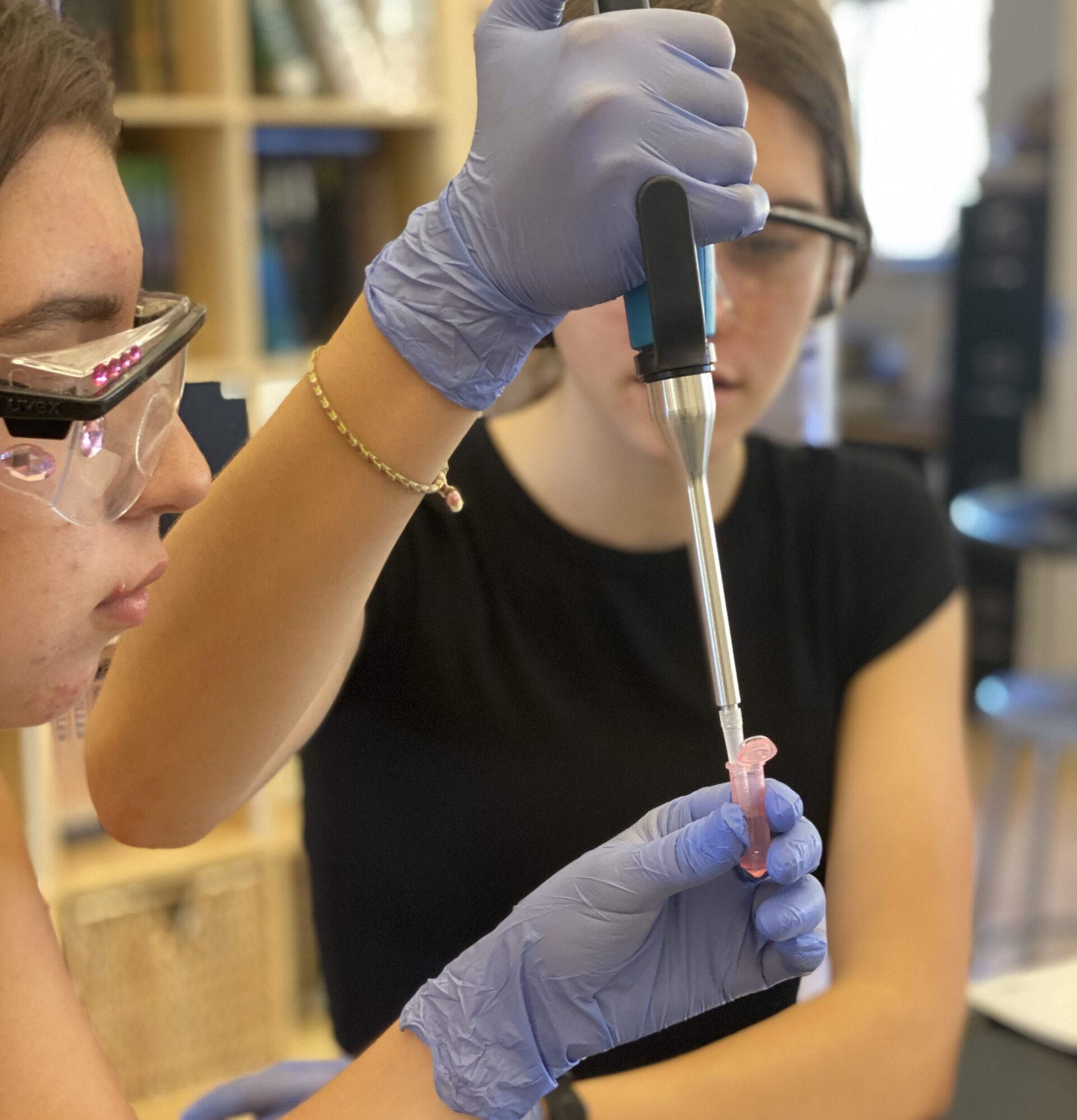Students from the Mount Madonna School (MMS) Biomedical Engineering course recently conducted a gene editing experiment using authentic cutting-edge Clustered Regularly Interspaced Short Palindromic Repeats (CRISPR) gene editing technology.
CRISPR is named after the DNA sequences that gave scientists a clue of how bacteria recognize and destroy viral invaders. This technology was used by Jennifer Doudna and Emmanuelle Charpentier to find and cut very specific DNA sequences, and it has revolutionized research. It has the promise of revolutionizing medicine over the coming years.
 In the experiment, MMS students successfully turned a lactose-tolerant gene into a lactose-intolerant gene. The lab experiment is the hands-on culmination of a unit study on the ethics and implications of genetic editing.
In the experiment, MMS students successfully turned a lactose-tolerant gene into a lactose-intolerant gene. The lab experiment is the hands-on culmination of a unit study on the ethics and implications of genetic editing.
“It is kind of wild how this can be used,” said eleventh-grader Erin Kavitsky, as she carefully transferred bacteria into a small vial using a scraping tool in the MMS science lab.
A simple CRISPR lab technique can find and edit a gene, said Lisa Catterall, MMS science teacher. “It can do this in grown humans, so that ‘germ cells’ or heritable traits are not altered. Sickle cell anemia is an example of a disease being treated successfully in trials with CRISPR.”
“If someone is suffering then as a society we should be able to help them with gene editing,” commented Kavitsky. “But if someone’s parents just want their baby to have blue eyes and blonde hair then that’s where we draw the line.”
Student Ona Musoll-Buendia agreed with Kavitsky that it is not right to use genetic technology to change appearance. 
“I do believe there is a point where genetic engineering should be allowed,” said Musoll-Buendia. “For example, if you see that a child will for sure have a terrible genetic condition that will make them suffer through life, then I think that they should edit out that gene, and replace it with a healthy gene.”
“I believe that it can be a beautiful thing when you can alter the genetics of sperm and eggs to protect individuals from certain viruses such as HIV,” commented classmate Sophia Manzur. “This would prevent the death of many individuals.”
Catterall instructed students to refrigerate the genes for two days before checking their results. When the class went back to the lab to check, some of the bacteria in their petri dishes had changed from blue to white, which meant the gene had been successfully edited.
“I see little white dots on the outside,” said student Emma Monclus.
“That means we did it!” said Catterall.
 MMS launched first through twelfth grade engineering sequence last year, with the University of California-approved honors course Biomedical Engineering offered as an upper division lab elective. Other units in the class include designing a robotic prosthetic limb, designing and testing pill coatings, reading medical images, and going through the engineering design process to propose a medical innovation.
MMS launched first through twelfth grade engineering sequence last year, with the University of California-approved honors course Biomedical Engineering offered as an upper division lab elective. Other units in the class include designing a robotic prosthetic limb, designing and testing pill coatings, reading medical images, and going through the engineering design process to propose a medical innovation.
The engineering program at MMS is aligned with the school’s adoption of the United Nations Sustainable Development Goals (SDGs). The SDGs are the world’s biggest “to-do” list, laying out an ambitious global agenda to tackle everything from preserving our oceans and terrestrial habitats to promoting equality and opportunity for all people, regardless of gender, age, race, nationality, socio-economic status or disability. Earlier this year, MMS was accepted into the United Nations Global Schools program for its commitment to the SDGs.
###
Contact: Leigh Ann Clifton, director of marketing & communications,
Nestled among the redwoods on 375 acres, Mount Madonna School (MMS) is a diverse learning community dedicated to creative, intellectual, and ethical growth. MMS supports its students in becoming caring, self-aware, discerning and articulate individuals; and believe a fulfilling life includes personal accomplishments, meaningful relationships and service to society. The CAIS and WASC accredited program emphasizes academic excellence, creative self-expression and positive character development. Located on Summit Road between Gilroy and Watsonville. Founded in 1979.




